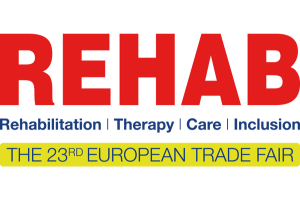Reflex-based electrotherapy “Incedo”: New hope for neurological dysfunctions
Strokes, paraplegia and multiple sclerosis (MS) are among the diseases that often leave behind serious functional disorders of the musculoskeletal system. For those affected, this often means a drastic reduction in quality of life.
Medical research offers hope
Functional electrical stimulation has established itself as a promising method for restoring lost functions and improving mobility. “With reflex-based electrotherapy ‘Incedo’ in particular, we have achieved reliable therapeutic success in supporting patients and regaining movement sequences through training,” explains Patrick Vaz Gomez, physiotherapist at the Lamprecht practice in Kirchheim/Teck.
The experienced team leader of the practice's own neurology department has recognised the potential of this method and explains how it works: Muscle functions are guided and controlled by the body's own impulses through nerve pathways. These impulses are disrupted in the neurological diseases. In electrotherapy, the missing impulse is therefore initiated externally. In reflex-based therapy, however, the muscle is not stimulated directly but triggered by a reflex.
Patrick Vaz Gomez, physiotherapist at the Lamprecht practice in Kirchheim/Teck, guides patients to therapeutic success with "Incedo".
©Praxis HSH Lamprecht
The decisive factor here is the stimulus at the right moment.
A stimulus is initiated via an electrode under the heel as soon as the patient lifts the foot. This triggers a flexion impulse that lifts the knee and supports the step.
Patrick Van Gomez explains:
In the practice, Vaz Gomez and his team treat all age groups with a wide range of symptoms and functional deficits. “As soon as the diagnosis has been established and residual functions are present, our task is to determine the appropriate treatment method together with the patient - in line with our motto: strengthen strengths to weaken weaknesses. The aim is to get the movement process back on track. The method depends on the individual patient. Basically, it depends on many repetitions so that the brain can relearn the movement sequence.”
Significantly higher training effect with ‘Incedo’
With the reflex-based electrotherapy “Incedo”, patients can significantly increase the number of steps they take and thus increase the training effect. This improves walking in terms of endurance and speed and trains balance. Training takes place in intensive units and short periods of time. This method is carried out on an outpatient and inpatient basis by experienced specialists.
Considering multi-professional collaboration and subsequent care concepts
Depending on the success of the therapy, it may be followed by the provision of aids, such as orthoses, to support and stabilise the patient in the long term. Orthopaedic and rehabilitation technicians regularly visit the practice for this purpose.
More on this at REHAB 2025
Vaz Gomez is convinced of the success of this therapy and hopes that significantly more patients will be able to benefit from this procedure. “We need significantly more users to be able to provide evidence-based treatment.” He is looking forward to presenting this therapy to a specialist audience at the CON.THERA conference during the REHAB 2025 trade fair in Karlsruhe.
Vaz Gomez will present the reflex-based electrotherapy ‘Incedo’ at CON.THERA on 24 May 2025.
Photo: Jürgen Rösner, Messe Karlsruhe
The lecture will take place in Module 5 - New Perspectives in Neurorehabilitation I, on Saturday, 24 May 2025, from 8:30 to 9:15 am.
